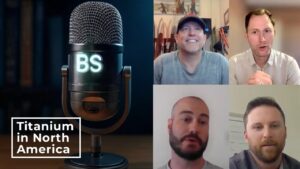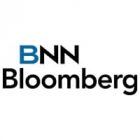Subscribe for Investment Insights. Stay Ahead.
Investment market and industry insights delivered to you in real-time.
The blockchain landscape has grown rapidly, introducing a diverse array of platforms tailored to meet evolving technological, economic, and social needs. Among the most prominent are Ethereum, Sonic (formerly Fantom), and Solana, each offering distinct advantages. However, the broader blockchain ecosystem includes other noteworthy platforms like Binance Smart Chain (BSC), Cardano, Polkadot, Avalanche, Tezos, Cosmos, Near Protocol, and Algorand. These platforms are addressing challenges such as scalability, interoperability, decentralization, and environmental sustainability, making them valuable contenders in various niches.
In this expanded exploration, we delve deeper into these platforms, offering a comprehensive comparison to illuminate their unique strengths and positioning in the blockchain space.
Ethereum: The Pioneer of Smart Contract Blockchains
Overview
Launched in 2015, Ethereum introduced the concept of programmable blockchain through smart contracts. It has since become the largest and most influential blockchain for decentralized applications (dApps).
Strengths
- Mature Ecosystem: Ethereum boasts the most extensive developer community and the widest array of dApps, spanning DeFi, gaming, NFTs, and beyond.
- Ethereum Virtual Machine (EVM): As a standard for blockchain computation, EVM ensures compatibility and seamless migration for developers.
- Security and Decentralization: Ethereum is among the most decentralized networks, enhancing its resilience to attacks.
Weaknesses
- High Gas Fees: Without Layer 2 solutions, transaction costs can soar during periods of high network activity.
- Scalability Issues: Native scalability remains limited, though the Ethereum 2.0 upgrade, including its transition to Proof of Stake (PoS), significantly improves performance.
Sonic: The Evolution of Fantom
Overview
Formerly known as Fantom, Sonic emphasizes high performance, interoperability, and eco-friendly solutions. Its aBFT consensus mechanism ensures fast, scalable, and secure transactions.
Strengths
- Transaction Speed: Sonic achieves transaction finality in 1–2 seconds, making it ideal for applications requiring real-time responsiveness.
- Interoperability: With tools that facilitate cross-chain communication, Sonic is building an interconnected blockchain ecosystem.
- Energy Efficiency: Its architecture consumes minimal energy compared to traditional Proof of Work (PoW) systems.
Weaknesses
- Ecosystem Size: While growing, Sonic’s ecosystem is still smaller than Ethereum’s or Solana’s.
- Limited Proven Stress Scenarios: As a newer player, its performance under extreme network stress is less tested.
Solana: The Speed Specialist
Overview
Solana has quickly become a favorite for developers seeking high-throughput and low-cost solutions. Its Proof of History (PoH) mechanism distinguishes it as a leader in speed.
Strengths
- Throughput: Solana can process up to 65,000 transactions per second (TPS).
- Low Costs: Transaction fees are negligible, making it ideal for microtransactions and high-frequency applications.
- Developer Tools: Solana offers robust tools tailored to gaming, DeFi, and NFT development.
Weaknesses
- Centralization Concerns: High-performance hardware requirements limit participation, raising centralization risks.
- Network Downtime: Solana has experienced outages, impacting its reliability.
Subscribe for Investment Insights. Stay Ahead.
Investment market and industry insights delivered to you in real-time.
Emerging Platforms: Building the Future of Blockchain
1. Binance Smart Chain (BSC)
Overview
Introduced by Binance, BSC offers low fees, high speed, and EVM compatibility.
Strengths
- Developer Compatibility: EVM support enables easy migration from Ethereum.
- Low Fees: Cost-effective transactions attract dApp developers and users.
- Extensive Ecosystem: BSC hosts a wide range of DeFi platforms, NFT marketplaces, and dApps.
Weaknesses
- Centralization: Binance’s influence raises questions about governance and control.
2. Cardano
Overview
Cardano employs a rigorous research-driven approach, emphasizing security and scalability through its Ouroboros PoS mechanism.
Strengths
- Sustainability: Low energy consumption aligns with environmental goals.
- Formal Verification: Smart contracts undergo formal proofs, enhancing reliability.
- Interoperability: Cardano’s roadmap includes bridges for other blockchains.
Weaknesses
- Slow Development: While thorough, Cardano’s growth is methodical, which can hinder rapid innovation.
3. Polkadot
Overview
Polkadot’s parachain architecture fosters scalable, interoperable blockchain ecosystems.
Strengths
- Parachains: Custom blockchains operate independently but connect seamlessly through the Relay Chain.
- Cross-Chain Interoperability: Polkadot facilitates communication between blockchains.
- Scalability: The architecture handles high transaction volumes without congestion.
Weaknesses
- Complexity: Parachain auctions and technical onboarding can deter developers.
4. Avalanche
Overview
Avalanche uses a unique consensus mechanism to achieve high throughput and rapid transaction finality.
Strengths
- Customizable Subnets: Developers can create specialized blockchains tailored to specific needs.
- EVM Compatibility: Avalanche supports Ethereum dApps, simplifying migration.
- Speed and Finality: Transactions are confirmed in less than a second.
Weaknesses
- Ecosystem Growth: Avalanche is still expanding its developer and user base.
5. Tezos
Overview
Tezos focuses on on-chain governance, enabling upgrades without hard forks.
Strengths
- Governance: Stakeholders vote on upgrades, ensuring adaptability.
- Energy Efficiency: Liquid Proof of Stake (LPoS) minimizes energy use.
- Reliability: Self-amending capabilities enhance long-term sustainability.
Weaknesses
- Limited Adoption: While reliable, Tezos lags behind in dApp and DeFi adoption.
6. Cosmos
Overview
Cosmos, known as the “Internet of Blockchains,” emphasizes interoperability using the Inter-Blockchain Communication (IBC) protocol.
Strengths
- IBC Protocol: Seamless cross-chain communication.
- Modular Approach: Developers can create custom blockchains using the Cosmos SDK.
- Scalability: Tendermint Core ensures fast and secure transactions.
Weaknesses
- Market Share: Smaller compared to Ethereum and Solana.
7. Near Protocol
Overview
Near combines sharding for scalability with user-friendly features for developers and end-users.
Strengths
- Nightshade Sharding: Dynamic scaling to handle increased demand.
- Developer Tools: Emphasis on ease of use and onboarding.
- Low Fees: Near’s cost structure appeals to budget-conscious users.
Weaknesses
- Recognition: Near is lesser-known despite its technological strengths.
8. Algorand
Overview
Algorand targets enterprise adoption with a focus on speed, security, and sustainability.
Strengths
- Pure Proof of Stake (PPoS): Combines decentralization with performance.
- Enterprise Focus: Strong emphasis on real-world applications.
- Environmental Sustainability: Minimal energy use aligns with green initiatives.
Weaknesses
- Ecosystem Limitations: Adoption in gaming and NFTs is relatively limited.
Subscribe for Investment Insights. Stay Ahead.
Investment market and industry insights delivered to you in real-time.
In-Depth Comparisons
1. Scalability and Speed
- Ethereum: 15–30 TPS on the base layer, with Layer 2 solutions like Optimism addressing scaling.
- Sonic: 4,500+ TPS, with near-instant finality.
- Solana: 65,000 TPS, leading in raw throughput.
- Others: Avalanche and Near Protocol also excel in scalability, while Polkadot’s parachains add a multi-dimensional approach.
2. Consensus Mechanisms
- Ethereum: Transitioned to PoS, improving energy efficiency.
- Sonic: aBFT ensures fault tolerance and real-time processing.
- Solana: PoH optimizes for speed.
- Others: Cardano’s Ouroboros and Polkadot’s NPoS add sustainability and flexibility.
3. Interoperability
- Ethereum: Limited without third-party bridges.
- Sonic: Designed for seamless interoperability.
- Solana: Focuses more on internal performance.
- Others: Polkadot and Cosmos lead in multi-chain integration, with IBC and parachains offering unparalleled cross-chain communication.
4. Environmental Impact
- Ethereum: PoS drastically reduced its carbon footprint.
- Sonic: Built for sustainability with minimal energy requirements.
- Others: Algorand, Tezos, and Cardano are standouts in green blockchain initiatives.
5. Ecosystem Maturity
- Ethereum: Largest and most diverse ecosystem.
- Sonic: Rapidly expanding but still in a growth phase.
- Solana: Thriving in gaming and DeFi but faces reliability issues.
- Others: Binance Smart Chain has a large ecosystem, while Cosmos and Polkadot focus on interoperability-driven growth.
Conclusion
Ethereum, Sonic, and Solana are central to the blockchain revolution, offering distinct solutions for developers, businesses, and investors. However, emerging platforms like Binance Smart Chain, Cardano, Polkadot, Avalanche, Tezos, Cosmos, Near Protocol, and Algorand contribute significantly to the blockchain ecosystem, addressing diverse challenges and opportunities.
As blockchain adoption accelerates, these platforms represent the backbone of innovation, setting the stage for a decentralized and interconnected future. Understanding their nuances helps developers and businesses make informed decisions tailored to their needs and aspirations.
Subscribe for Investment Insights. Stay Ahead.
Investment market and industry insights delivered to you in real-time.




















